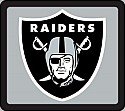
It has been quite a while since I published a Forgotten Battle of the Civil War. But I am back now and today's episode will focus on the Battle of Sheperdstown.
After Lee's "defeat" at Sharpsburg both he and the Army of Northern Virginia retreated across the Potomac at Shepherdstown. Covering the Confederate retreat was Lee's chief of artillery General William Pendleton. General Pendleton set up 44cannon on a bluff overlooking the Potomac River. It was Pendleton's job to make sure that the Union army did not prance upon Lee's retreating troops. Two small brigades of infantry helped protect Pendleton's guns as the Confederates waded the river and by daybreak almost the entire army was across. On September 19th Union caverly and the 5th Army Corps under General Fitz John Porter sent the First U.S. Sharpshooters and one company of the 5th New York Infantry forward. They used the dry trench of the C & O Canal as cover and began to pick off Confederate gunners on the far side of the river. Some Union artillery shells crashed into Shepherdstown itself, causing confusion and chaos among the townspeople and wounded rebels left there.
As Union fire intensfied General Pendleton spread his troops thing so all of his guns could be protected. Just before dark General Porter ordered 500 men to attack and the Confederate infantry was forced back. Pendleton managed to pull out most of his guns but four pieces fell under Union control. Porter pulled the captured guns and his troops back to the Northern side of the Potomac River. As for the Confederates Pendleton mistakenly reported to Lee that Union forces were in Virginia and had captured the entire reserve artillery. Lee and Jackson reacted by ordering A. P. Hill's and Jubal Early's Divisions to stop their withdrawal, turn, and drive the pursuers back into Maryland.
The following day, General Porter ordered two brigades to cross the Potomac and clear out any rebel forces that were in the area. Waiting for them were the troops under Early and Hill. With the Confederates advancing in force, Porter ordered his troops to retreat and he ordered his artillery to cover the "retreat" with a heavy artillery barrage. Colonel Charles M. Prevost, commanding the newly formed 118th Pennsylvania Infantry refused to retreat and Hill's Confederates slammed into the Pennsylvanians as they formed near the edge of the Potomac. Prevost's men quickly attempted to return fire but many of them had defective guns and scores of his men dropped their ineffective weapons in disgust and dashed across the Potomac. Colonel Prevost was wounded trying to steady his men, other officers led a bayonet charge which was smashed, and the regiment broke apart. Some tried to escape by climbing down the bluffs under Confederate fire, and many died as they fell to the rocks below. Others picked their way past the old cement mill, ran across the slippery dam, or waded across at the ford. Of the 700 men in the 118th who crossed the river that morning, only 431 came back across.
The battle proved to Union commander George B. McCellan that pursing Lee after Antietam (Sharpsburg) would only cause more problems for him because Lee's army still had some fight in it. He hestiated and this delay eventually would cause President Abraham Lincoln to remove him as the commander of the Army of the Potomac on November 7. The Battle of Shepherdstown ended the Maryland Campaign, Lee's first invasion of the North.









